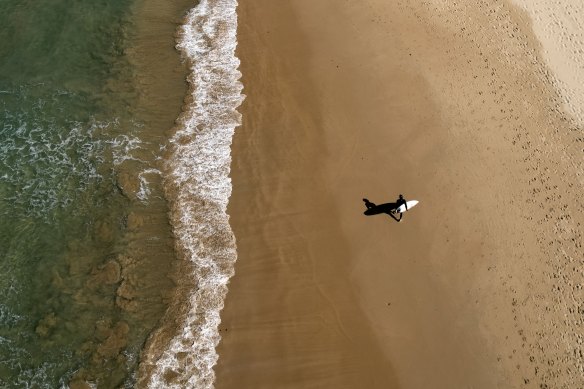Save articles for later
Add articles to your saved list and come back to them any time.
Put away those umbrellas and scarves, as Sydney is to get an early taste of spring weather this week.
There will be little rain and clear skies as the city experiences temperatures ranging from the low to mid-20s throughout the week. The forecast will be welcome news after months of heavy rain, driven by three-back-to-back La Nina events that dampened the east coast.
Sydney will get an early taste of spring this week with warm temperatures here to stay.Credit: Brook Mitchell
Bureau of Meteorology forecaster Gabrielle Woodhouse said the warm weather was driven by a cold front that had moved across the state late last week, leaving behind it a high-pressure system, clear skies and warmer weather.
The warm weather will likely linger for the next week or so, as a cold front sweeps across parts of southern inland NSW in the middle of the week, fuelling warmer conditions for eastern parts of the state, Woodhouse said.
It’s still too early to say if August will break weather records, unlike last month when the city recorded its hottest July since 2018. Mean daily maximum temperatures were around 2 to 3 degrees their monthly averages.
But the recent warm weather has contributed to dozens of fires igniting across the state; more than 40 blazes burned last week. For authorities, the coming fire season poses a greater risk than in previous years, particularly in western parts of NSW.
These areas have had significant growth due to years of heavy rain, and will dry out quite rapidly if there is hot and windy weather.
A NSW Rural Fire Service map shows areas of the state that burnt in the 2019-20 season are unlikely to see fire this year.
However, years of heavy rain have promoted strong vegetation regrowth, which means fires could still pop up on hot and windy days. This is of particular concern along the South Coast.
Parts of the Greater Sydney region, including parts of the Blue Mountains, and the Northern Rivers region are less likely to see fire this year. Increased fire risk will return to these parts in a few years’ time.
Making matters worse are three years of La Nina, which have led to heavy rainfall over much of the east coast, severely hampering hazard reduction efforts. Just over 20 per cent of scheduled hazard reduction burns were completed in the past financial year. However, July has been fairly dry and the agency has managed to conduct mitigation works on about 10,000 hectares so far.
Get to the heart of what’s happening with climate change and the environment. Our fortnightly Environment newsletter brings you the news, the issues and the solutions. Sign up here.
Most Viewed in Environment
From our partners
Source: Read Full Article



